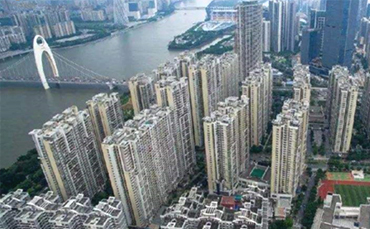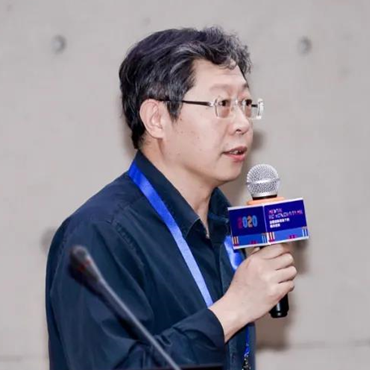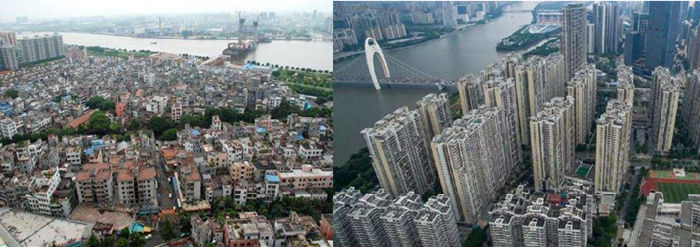


Contributor: Urban Renewal Academic Committee, UPSC
Introduction
On the morning of November 28, at the annual meeting of Urban Renewal Academic Committee of UPSC in 2020, Professor Wang Shifu was invited to give a keynote report: " Leading Urban Renewal with Institutional Innovation". Professor Wang Shifu pointed out that when talking about urban renewal system construction, the maintenance of built-up areas should be put in the first place, followed by urban redevelopment. Taking the urban renewal practice in Guangzhou as an example, he expounded the dilemma faced by urban renewal practice at the present stage and the necessity of institutional innovation. He further summarized the experience in urban renewal practice at home and abroad and proposed the contents that should be paid attention to in the aspects of land, planning and construction in the future urban renewal system innovation.

Presenter: Wang Shifu
Director of China Urban Planning Association,
Vice President, School of Architecture, South China University of Technology
01
Urban renewal is a comprehensive action, aiming at solving the sustainable development of economy, society and environment in urban built-up areas. Nowadays, the practice of "City Betterment and Ecological Restoration" should be emphasized in urban renewal. These actions are directed at the built environment, and the basic responsibility of urban renewal lies in the maintenance of built-up areas to keep them high quality and vitality and ensure public services. The responsibility of urban renewal is to solve the problems in urban redevelopment so as to realize the inter-generational upgrading. In general, urban renewal reflects the inner view of development and values of the city.
The current urban renewal practice still lacks institutional support. Taking Guangzhou as an example, there is no institutionalized way to determine the property rights of existing buildings, including construction project planning permit, construction permit, etc. For example, the improvement and style management of Qilou Street lacks institutional basis. Meanwhile, the maintenance of built-up areas and urban redevelopment are the two main topics of urban renewal. Hence, it is critical to reflect that how to realize the redevelopment of built-up areas in a compliant, legal, reasonable and reasonable way.

Traditional Central Axis of Guangzhou -- Environmental Renovation of Qilou Street on Beijing Road
02
Then, Professor Wang summed up the plight of urban renewal practice and pointed out the necessity of promoting the innovation of urban renewal system.
The first dilemma is the path dependence on real estate. At present, many governments still fail to change the thought of relying on land finance to achieve the goal of economic growth. In the process of urban renewal, the government, the original landowners and the developer formed an alliance of administrative power, property right and financing capital for cooperative interest. In this situation, the feasibility of a project could be improved. However, the negative external effects on urban public interests, environment, transportation and public services caused by partial project promotion have not been accurately evaluated. For example, the reconstruction of urban villages has aggravated the traffic congestion around them.

The "Liede Model" under the Marketization (Comparison Before and After Transformation)
The second dilemma is the lack of co-ordination of governance targets and authority. Taking Guangzhou as an example, it is mainly reflected in the lack of structural and systematic coordination between the "three old" reconstruction and systematic planning, between the "three old" reconstruction interior, and between various functional departments:
1)"Three old" reconstruction failed to connect with the city comprehensive planning and the detailed regulatory planning systematically.
2)There is a lack of coordination and integration between old city, old factory and the old village.
3) Urban reconstruction attaches too much importance to local interests and lacks a holistic view.
4) The decision-making contradictions between municipal and district governments and departments seriously affect the implementation of renewal.

Urban Renewal Plans at All Levels
The third dilemma is the instability and hysteresis of renewal policy. In general, the renewal policy is based on the summary of practical experience, and problems are constantly encountered and revised. The changeableness of policies could easily lead to the change of expectation of stakeholders, the delay of application as well as the reduction of approval efficiency. The lag of institutional supply has become more prominent as the demand of urban built environment is increasingly diversified.
On the one hand, from the perspective of economic dimension, the built environment will be either replaced by high-intensity material or deteriorated due to low quality. On the other hand, from the perspective of social dimension, the material replacement of demolition and reconstruction has brought about gentrification and social rupture, while the material decay has led to poverty. Therefore, urban renewal requires institutional innovation to solve the dilemma and realize the maintenance and redevelopment of built-up areas.
03
Afterwards, Professor Wang talked about the institutional innovation of the maintenance and redevelopment of the built-up area.
Firstly, the "institutional innovation" in the maintenance of built-up areas should attach importance to the innovation of capital and responsibility mechanism. Taking the installation of elevators in old buildings as an example, on the one hand, the government should take the responsibility of people's livelihood and policy-based compensation; on the other hand, the specific housing maintenance funds should be fully and rationally used to match the funds, responsibilities and interests.
Secondly, in the process of redevelopment of built-up areas, the innovation of right demarcation and decision-making should be emphasized. For instance, in Liwan District, Guangzhou, local government took the micro renovation of Yongqing area as a pilot project and proposed a system similar to "public housing adopters", which would give enterprises 15-year management right. In addition, the municipal government also proposed that the utilization area of historical buildings could be increased without paying land price. Furthermore, the system of "positive list" + "negative list" is launched for the old residential areas with historical and cultural value.

Texture Comparison of Yongqing Fang Before and After Micro Reconstruction
(Source: Vanke Weekly)
04
Finally, Professor Wang put forward the prospect of the new normal of urban renewal as well as the expectation of "institutional innovation".
When considering the new normal of urban renewal, the government needs to pay more attention to the social process of the built environment and the corresponding institutional transformation, rather than just focusing on spatial improvement or economic development. For the market, it might be an opportunity with great potential to provide a better living environment and service. For the society, urban renewal is a process of cultivating, empowering and gradually maturing citizens.
In conclusion, institutional innovation will remain a key word in urban renewal research and practical exploration in the future. At the level of territorial space, institutional innovation should adapt to the land subdivision, consolidation and transfer system of urban renewal. At the level of planning, institutional innovation requires development empowerment, licensing and review systems which are suitable for urban renewal. At the level of construction, institutional innovation should be applied to the behavior definition, norms and supervision system of urban renewal.
[1]"three old" reconstruction: “Three old” reconstruction refers to the unique reconstruction mode of Guangdong Province, namely, the reconstruction of "old city, old factory and old village."
The original text of the report is in Chinese. According to the contents of the report, it is sorted out and posted on the official WeChat of UPSC. All figures are from the original text. Some of the contents have been adjusted in translation.